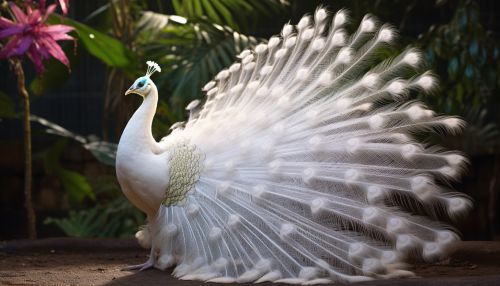Leucism
Introduction
Leucism is a partial loss of pigmentation in an animal—which causes white, pale, or patchy coloration of the skin, hair, feathers, scales or cuticle, but not the eyes. Unlike albinism, it is caused by a reduction in multiple types of pigment, not just melanin.


Characteristics
Leucism is a condition characterized by reduced pigmentation in animals and humans. The term is derived from the Greek leukos, meaning "white". The condition is caused by a mutation in pigment cells during development, leading to a variety of effects in the physical appearance of the organism. These effects can range from patches of lighter coloration to a completely white appearance.
Causes
Leucism is caused by a mutation in a gene that codes for a protein involved in the production of pigments. This mutation can occur in any of the pigment-producing cells, including melanocytes, which produce melanin, and xanthophores, which produce yellow and red pigments. The mutation results in a reduction in the amount of pigment produced, leading to the characteristic white or pale coloration.
Types of Leucism
There are several types of leucism, each with its own specific characteristics and causes. These include:
Piebald Leucism
Piebald leucism is characterized by patches of unpigmented skin, hair, or feathers, interspersed with areas of normal coloration. This form of leucism is often seen in animals such as horses, dogs, and birds.
Ino Leucism
Ino leucism is a form of leucism characterized by a complete lack of melanin, resulting in a completely white appearance. This form of leucism is often seen in birds, and is the result of a mutation in the gene that codes for the enzyme tyrosinase, which is involved in the production of melanin.
Partial Leucism
Partial leucism is characterized by patches of unpigmented skin, hair, or feathers, interspersed with areas of normal coloration. This form of leucism is often seen in animals such as horses, dogs, and birds.
Effects on Animals
Leucism can have a variety of effects on animals, depending on the extent of the pigment loss and the type of animal. In some cases, leucism can make animals more visible to predators, while in others, it can make them more attractive to potential mates.
Leucism in Humans
In humans, leucism is extremely rare. When it does occur, it is usually associated with hair color, resulting in white or very light blonde hair. Leucism can also affect the skin and eyes, although this is less common.
